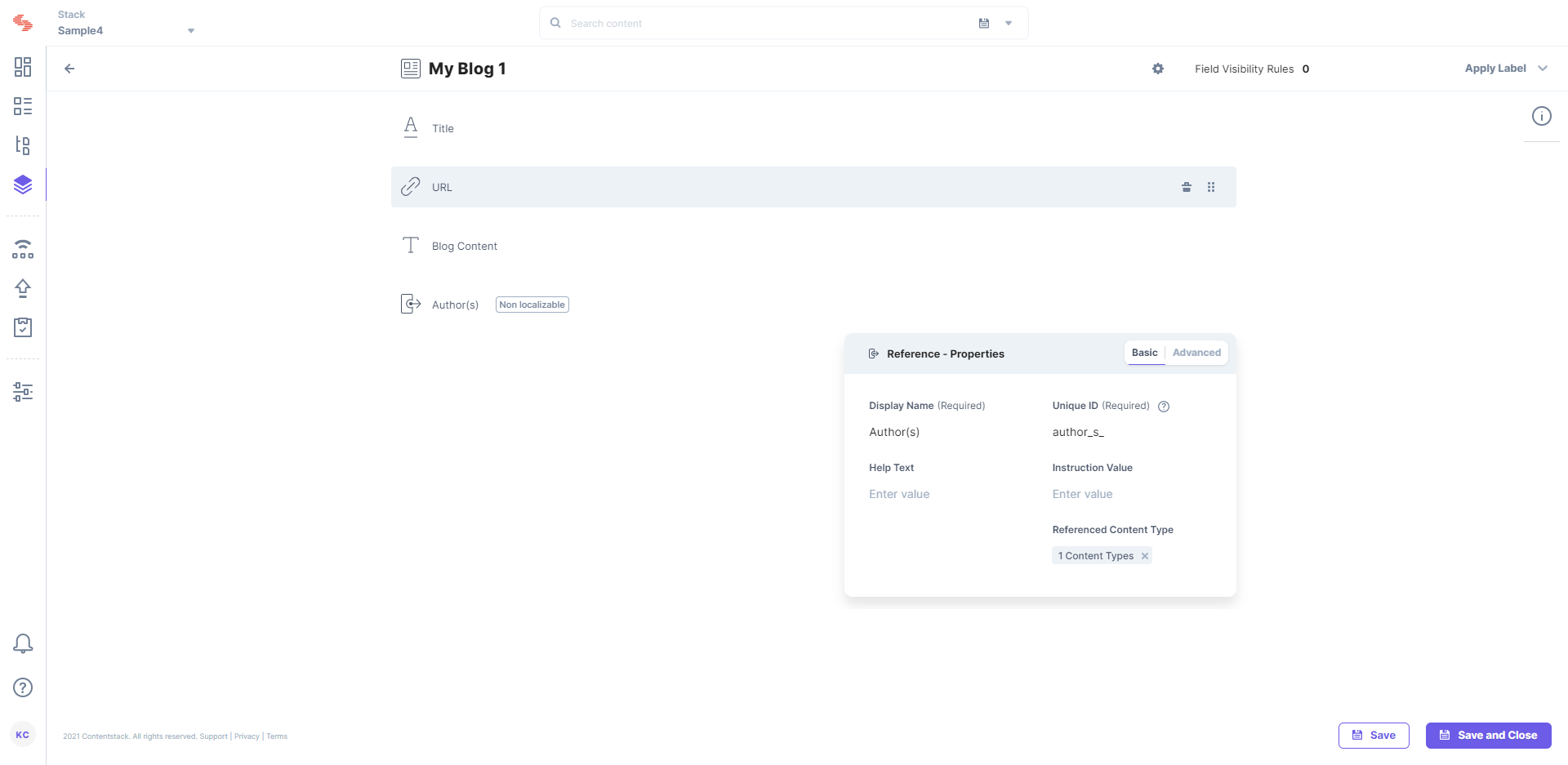Was this article helpful?
Thanks for your feedback
On 29th July, 2019, we introduced a new version of the Reference field that provides referencing to multiple content types. For stacks created after 29th July, 2019, you will automatically be using the upgraded Reference field. All previously created stacks will continue referencing a single content type, but you can switch to the new version (and back to the older version) at any time by performing the following steps.
If your stacks were created before 29th July, 2019, chances are that you are using an older version of the Reference field in your content types. Now, to switch to the new version, perform the following steps and upgrade your old Reference field to the new version.

Your Reference field will get updated and you will be able to select multiple content types as reference.
Note: When selecting content types, at a time, you can add up to 10 content types as reference into a single Reference field. For more limitations, refer to the Limitations section.
When you create entries for this content type, you will see the new version of Reference field where you can select entries of multiple Content Types as references.
Warning: The upgradation impacts the include referencing of your existing published entries. In the case of all published entries, you need to save them again so that your Reference field format changes to the upgraded format, and then publish these entries again.
Upgrading your Reference field introduces certain API Changes. The primary change being the input format of your Reference field changes from array of strings to array of objects.
The change in the format of the Reference field is as follows:
| OLD | NEW |
{
...
"ref_field": ["blt33a3333333df3c33",...]
...
}
| {
...
"ref_field": [{
"uid": "blt1111fe11e111111f",
"_content_type_uid": "footer"
},
...
} |
You can refer to the API Change Log document to know more about it.
You need to update your SDK versions to the latest one in order to use the multiple content type referencing feature.
We have updated DataSync and added support for the new Reference field. You need to update it to the latest version.
We have updated Contentstack Express Framework and added support for the new Reference field. You need to update it to the latest version.
To switch back to your older version of Reference field, you need to downgrade it.
Now, to switch to the old version of Reference field, perform the following steps:
Your Reference field will get downgraded and you will be able to select only one content type as reference. Now, when you create entries for the content type, you will see the new version of Referenced field where you can select entries of only a specific content type that has been set as the reference. For more limitations, refer to the Limitations section.
Warning: The degradation impacts the include referencing of your existing published entries. In the case of all published entries, you need to save them again so that your Reference field format changes to the upgraded format, and then publish these entries again
Now, downgrading your Reference field will revert the introduced API Changes. The primary change being the input format of your Reference field changes from array of objects to array of strings.
The change in the format of the Reference field is as follows:
| NEW | OLD |
{
...
"ref_field": [{
"uid": "blt1137fe73e677645f",
"_content_type_uid": "footer"
},
...
}
| {
...
"ref_field": ["blt33a5572529df8c30"],
...
}
|
You can refer to the API Change Log document to know more about it.
You do not need to downgrade your SDK versions as they are backward compatible.
You do not need to downgrade your DataSync version as they are backward compatible.
You do not need to downgrade your Contentstack Express Framework version as they are backward compatible.
After upgrading/downgrading the Reference field, you need to save the entry and then publish it to see the field in action.
Was this article helpful?
Thanks for your feedback